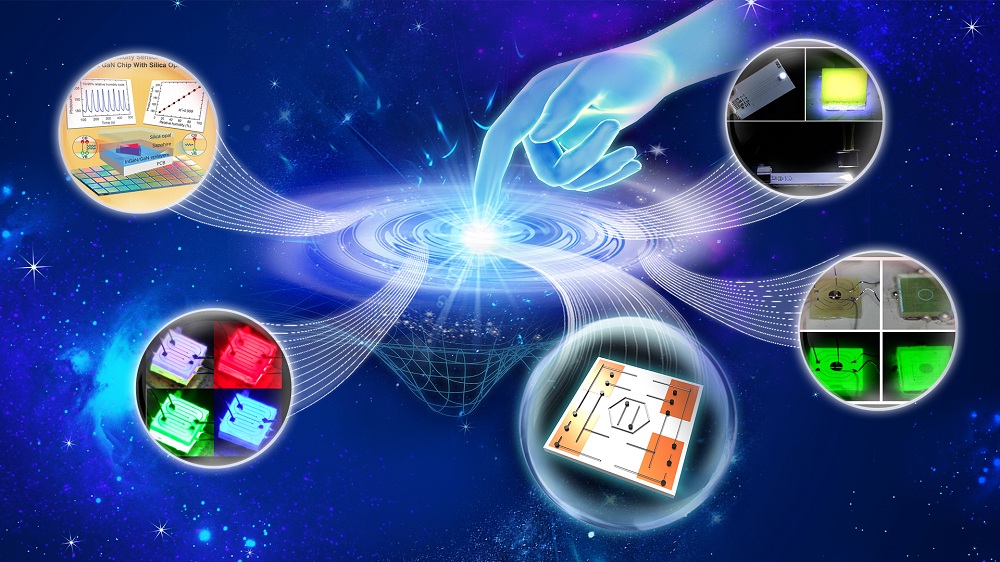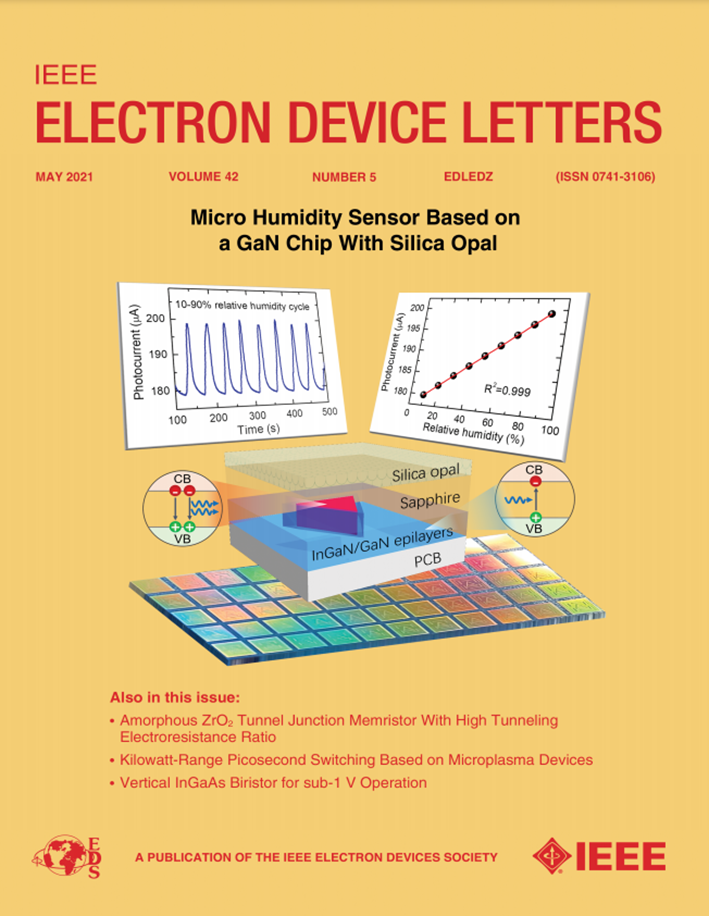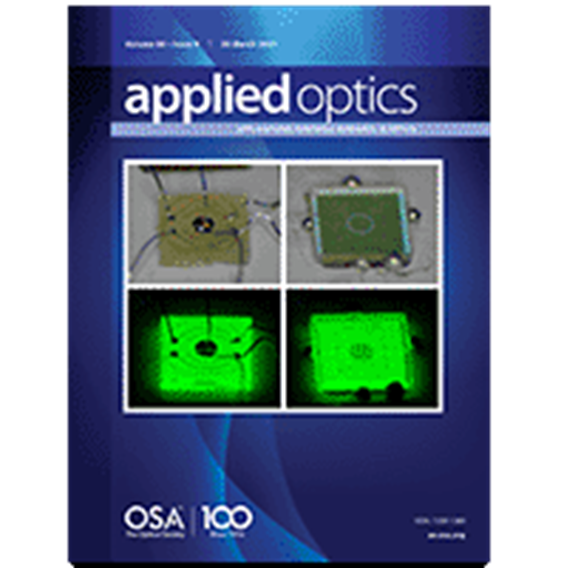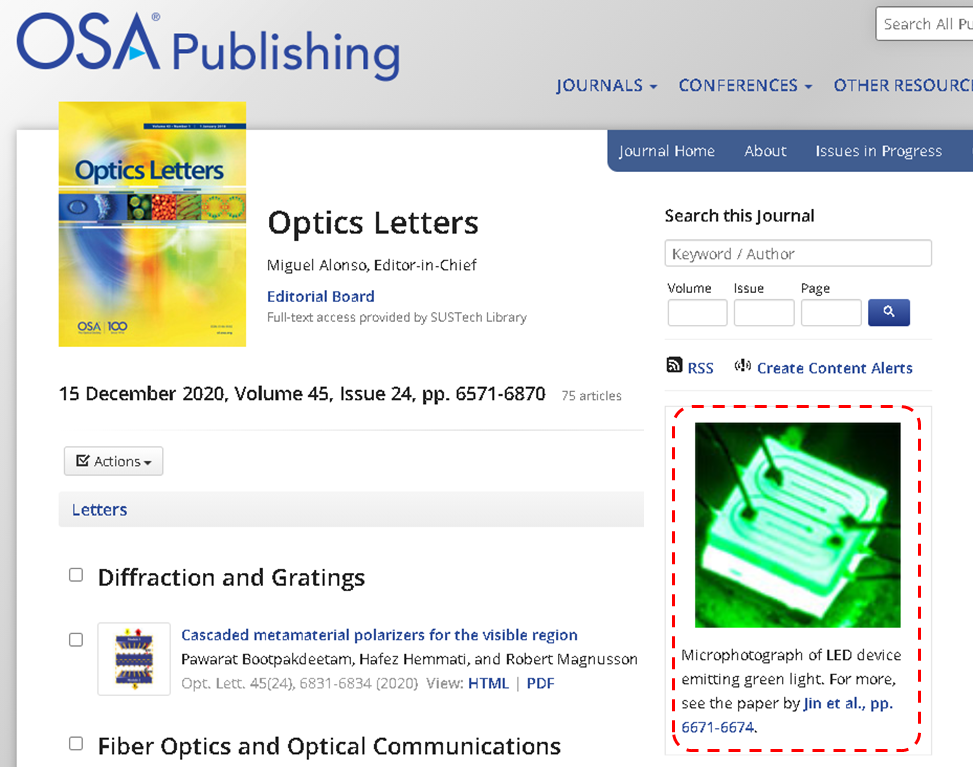current location :home>News
Recently, Dr. Kwai Hei Li’s team from the School of Microelectronics at the Southern University of Science and Technology (SUSTech) has made significant progress in the field of gallium nitride (GaN) based optoelectronic integrated devices. Their research results have been published in various academic journals, such as IEEE Electron Device Letters, Applied Optics, Optics Letters, and Journal of Lightwave Technology.

Micro humidity sensor based on GaN chip photonic crystal opal integrated with Silica Opal
Humidity is a critical parameter in numerous industrial manufacturing fields, human activity, medical and chemical processing. With the rapid development of portable sensing equipment, the demand for a humidity sensor with comprehensive performances of fast response, high sensitivity, small size, and low cost is emerging as an important trend.
The novel chip-scale integration scheme entirely eliminates the complex assembly of external optical elements. The measured photocurrent signal has a linear relation over a wide humidity range of 10-90%. The developed micro-sensor possesses the advantages of compact size, low cost, high repeatability, and ease of integration and operation, which paves the way for its widespread adoption in humidity sensing.
The team proposed a new type of humidity sensor on the integration of GaN chips and opal. Their results were published in IEEE Electron Device Letters, entitled, “Micro Humidity Sensor Based on a GaN Chip With Silica Opal,” and was selected as Editor’s Pick and the cover article. SUSTech undergraduate student Yumeng Luo and doctoral student Binlu Yu are the co-first authors of this paper.

Performance comparison of wire-bonded and flip-chip-bonded optoelectronic integrated devices
The team studied the optical, electrical, and thermal properties of green light-emitting diodes with monolithically integrated photodetectors based on wire-bonding and flip-chip configurations. Compared with a conventional wire-bonding design, the integrated device, which incorporates a flip-chip design, can offer superior optical and thermal performances. Additionally, under an LED current of 200 mA, its light output and detected photocurrent increase by 37.7% and 14.7%, respectively. The different extents of enhancement in both light output and photocurrent were also studied by analyzing their optical, electrical, and thermal properties under varying LED currents. The results provide important guidance for the design of GaN-based integrated systems operating at different current densities.
The team studied green light-emitting diodes (LEDs) with monolithically integrated photodetectors and compared the integrated wire bonding and flip-chip packaging devices. Their paper was published in Applied Optics, entitled “Performance of InGaN Green light-emitting diodes with on-chip photodetectors based on wire bonding and flip-chip configurations.” Their paper was selected as Editor’s Pick and the cover page article. SUSTech master’s student Jiahao Yin is the first author of this paper.

Optimized design of distributed Bragg reflector for vertical stacking of RGB light-emitting diodes
The vertically stacked LED architecture overcomes the problems of uneven color, and limited viewing angle of RGB LED in a planar structure. However, previous research on vertically stacked structure devices has been faced with light loss caused by light path divergence and material absorption, limiting the overall light output efficiency. To solve this problem, the team designed and introduced two layers of DBR structures that can selectively reflect and transmit light of target wavelength into the traditional vertical structure, based on the controllability of the reflection and transmission characteristic of the DBR structure. Compared with the conventional structure, the vertical structure RGB light-emitting diode with the optimized DBR structure has improved by 1.6%-7.4% in luminous efficiency at a color temperature of 3000-8000 K.
The team proposed a vertical-structure RGB LED with distributed Bragg reflector (DBR) adjustable color and brightness. Their results were published in Optics Letters, entitled “Vertically-Stacked RGB LEDs with Optimized Distributed Bragg Reflectors.” It was also selected as the cover article of the journal. Joint master’s student Haotian Jin of SUSTech and Huazhong University of Science and Technology (HUST) is the first author of this paper.

White light-emitting diodes with on-chip photodetectors
In this study, four LEDs containing PDs in different positions were designed and fabricated, and their photoelectric characteristics were studied. Compared with the non-centered PDs, the PD located in the center of the LED shows the largest detected photocurrent and has a minimum impact on the uniformity of the LED emission. Under the working current of 100 mA, the photocurrent of the detector at the center is 33% higher than that at the corner, and the driving current of the LED is linear with the photocurrent. The on-chip detector shows the same sensing performance as the external silicon-based photodiode. It has less influence on LED emission, making it highly valuable for real-time detection of the intensity of LED sources in various lighting applications.
The team proposed the design and fabrication of white LEDs with on-chip photodetectors (PDs). Their research results were published in the Journal of Lightwave Technology, entitled “On-Chip Integration of III-Nitride Flip-Chip Light-Emitting Diodes With Photodetectors.” The research results were featured in Semiconductor Today. Joint master’s students Jing Li from HUST and Jianan Wu from the University of Hannover are the co-first authors of this paper.

Assistant Professor Kwai Hei Li is the corresponding author of the above papers. Their research was also supported by Professors Hongyu Yu and Qing Wang from the School of Microelectronics at SUSTech, Professor Yiping Wu at HUST, and Professor Ling Zhu at Shenzhen University.
Paper links:
IEEE Electron Device Letters: https://ieeexplore.ieee.org/document/9393374/
Applied Optics: http://dx.doi.org/10.1364/AO.419162
Optics Letters: http://dx.doi.org/10.1364/OL.408416
Journal of Lightwave Technology: https://ieeexplore.ieee.org/document/9314174